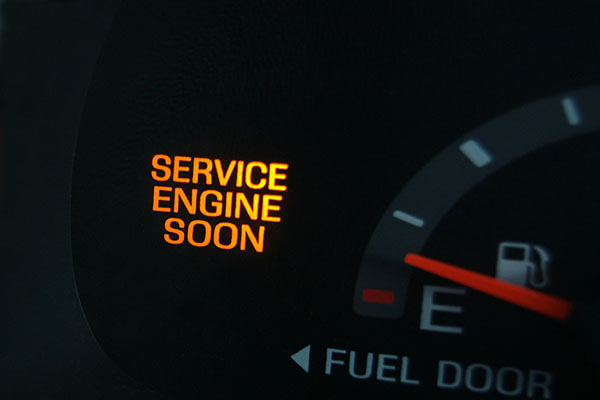
Your car's dashboard serves as a vital communication center, providing essential information about your vehicle's health. Among the various dashboard lights, certain warning indicators require immediate attention to ensure your safety on the road. Here are three of them and what to do if you spot them:
Check Engine Light
The "Check Engine" light is perhaps the most notorious dashboard light that often leads to anxiety among drivers. This light, usually depicted as an engine symbol, indicates a potential issue with your vehicle's engine or related components.
If the check engine light illuminates, follow these steps:
- Don't panic: The appearance of the light doesn't necessarily indicate a catastrophic problem. However, it does require attention.
- Check for immediate issues: Observe the car's performance, listen for unusual noises, and look for any noticeable changes in temperature or fluid levels.
- Tighten the gas cap: While it might sound funny, a loose or faulty gas cap can trigger the check engine light. Try tightening it securely and see if the light goes off after a few trips.
Schedule a diagnostic check: If the light persists or you notice other abnormal symptoms, we advise you to consult a professional mechanic who can perform a diagnostic scan to identify the underlying issue.
Battery/Charging System Light
The battery or charging system light, typically represented by a battery icon, warns you about potential problems with your vehicle's electrical system.
Here's what to do if this light illuminates:
- Check the battery connections: Ensure the battery terminals are clean, tight, and free from corrosion.
- Inspect the drive belt: A loose or worn-out drive belt can affect the charging system. Check for signs of damage or slack and replace if necessary.
- Test the battery voltage: If you have a voltmeter, measure the battery voltage. A healthy battery should read over 12 volts. If it's significantly lower, it may require charging or replacement.
Tire Pressure Monitoring System (TPMS) Light
The TPMS light, typically depicted as an exclamation mark inside a tire symbol, alerts you to potential tire pressure issues.
Follow these steps to address this warning:
- Check tire pressure manually: Use a tire pressure gauge to measure the pressure of each tire, including the spare. Inflate or deflate the tires as needed to match the recommended pressure specified in your vehicle's manual.
- Inspect for punctures or damage: Visually inspect the tires for any signs of punctures, cuts, or bulges. If you notice any damage, have it repaired or replace the tire if necessary.
- Consult a tire professional: If the light remains illuminated or you suspect a faulty TPMS sensor, it's advisable to visit a tire professional who can diagnose and resolve the issue.
For professional car diagnostics and inspections, contact us at Integrity Auto Services! We will be happy to help out with any issue that is bothering you!